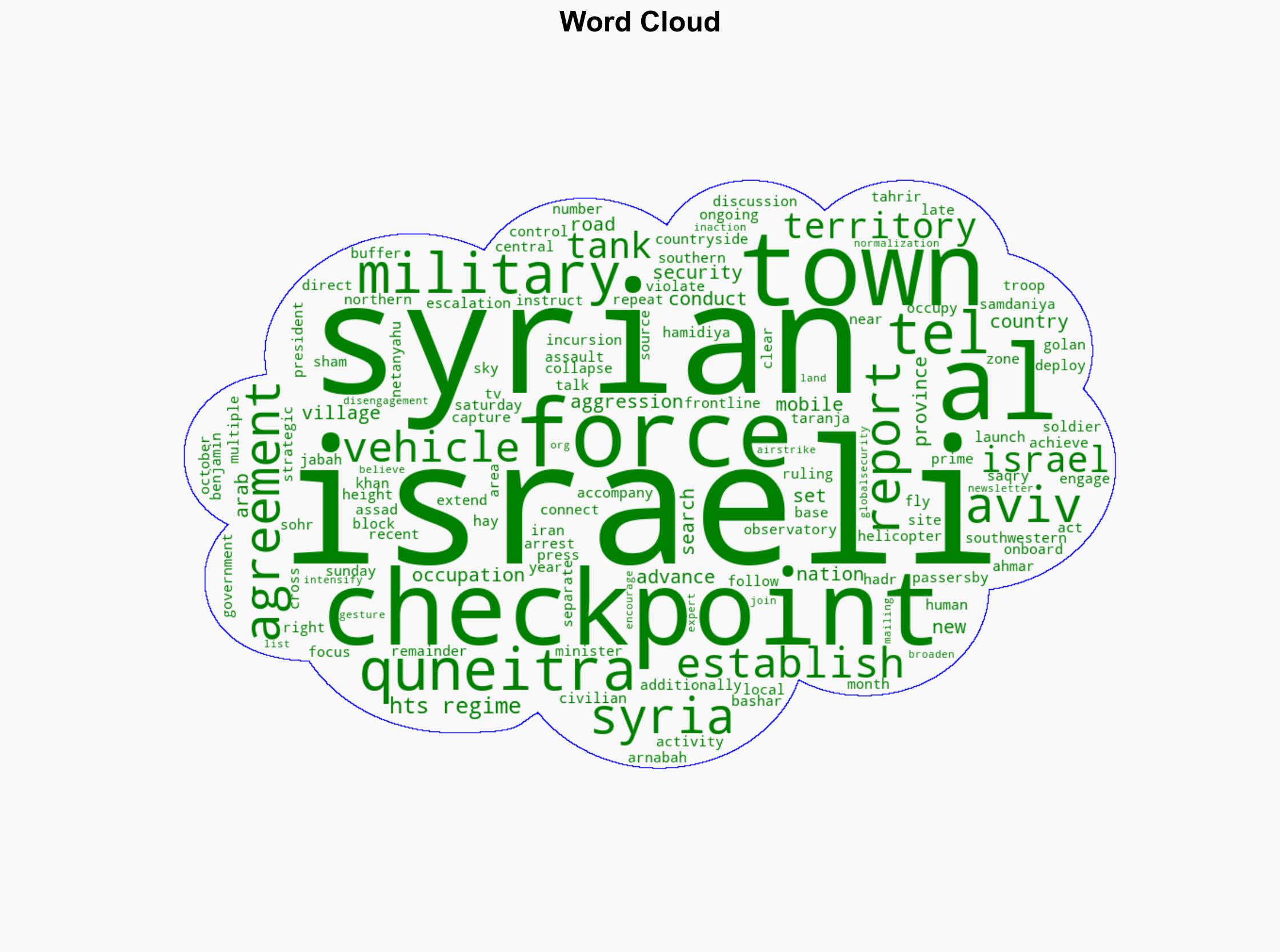Israeli forces conduct new incursions into Syria’s Quneitra set up checkpoints – Globalsecurity.org
Published on: 2025-10-27
Intelligence Report: Israeli forces conduct new incursions into Syria’s Quneitra set up checkpoints – Globalsecurity.org
1. BLUF (Bottom Line Up Front)
The most supported hypothesis is that Israeli forces are increasing their military presence in Quneitra to establish a buffer zone and deter threats from Iranian-backed forces and other hostile entities. This is supported by the deployment of military assets and the establishment of checkpoints. Confidence level: Moderate. Recommended action: Monitor developments closely and engage in diplomatic channels to de-escalate tensions.
2. Competing Hypotheses
1. **Hypothesis A**: Israeli incursions are aimed at establishing a buffer zone to prevent Iranian and Hezbollah influence near the Golan Heights. This is supported by the strategic positioning of checkpoints and military assets.
2. **Hypothesis B**: The incursions are a tactical maneuver to pressure the Syrian government and its allies into negotiations, leveraging military presence as a bargaining tool. This is suggested by the timing of the incursions amidst ongoing talks between Israel and Syrian factions.
Using ACH 2.0, Hypothesis A is better supported due to the consistent pattern of Israeli military actions aimed at countering Iranian influence in the region.
3. Key Assumptions and Red Flags
– **Assumptions**:
– Israel perceives a significant threat from Iranian-backed forces in Syria.
– The Syrian government is unable or unwilling to prevent hostile actions from its territory.
– **Red Flags**:
– Lack of direct evidence linking the incursions to specific threats.
– Potential bias in the source, as it may reflect a particular geopolitical stance.
4. Implications and Strategic Risks
– **Implications**: Increased Israeli military presence may lead to heightened tensions with Syria and its allies, potentially escalating into broader regional conflict.
– **Strategic Risks**:
– Escalation into a wider military confrontation involving regional powers.
– Disruption of ongoing diplomatic efforts to stabilize the region.
– Potential for retaliatory actions by Iranian-backed forces.
5. Recommendations and Outlook
- Enhance intelligence gathering to verify the presence and intentions of Iranian-backed forces in the region.
- Engage in diplomatic efforts to de-escalate tensions and promote dialogue between involved parties.
- Scenario Projections:
– **Best Case**: Successful negotiation leads to a reduction in military tensions.
– **Worst Case**: Escalation into a broader conflict involving multiple regional actors.
– **Most Likely**: Continued low-level military engagements with intermittent diplomatic efforts.
6. Key Individuals and Entities
– Benjamin Netanyahu
– Hay’at Tahrir al-Sham (HTS)
– Syrian Observatory for Human Rights (SOHR)
7. Thematic Tags
national security threats, regional focus, military strategy, Middle East geopolitics




